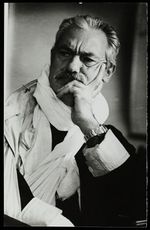Terzani online museum
Introduction
Many inventions in human history have set the course for the future. One of them is a camera, which has transformed the way we share bondings and stories.
Storytelling is an essential part of the human journey. Starting from what one does when waking up in the morning to the explorations in the deep space, the connections are formed through stories. The tales were mostly transferred through sound until recently[1]. The invention of the camera[2] started to change the landscape of this narrative. People could capture live-action into images. Later, this leads to the invention of the video camera[3], color photos/videos[4] [5], and now we can nearly see the entire world in augmented reality[6] as if we are living the moment. However, many important events in history are captured as photographs for a long time now. To understand the then situations better, one would immensely gain by looking at the photographs if not videos. If not for research, it is always fascinating to visit history and appealing to see the pictures of past times. Nevertheless, having to go through an innumerable number of images is not productive. Thus, we want to create an online platform that would help access these photographs and travel through them.
Tiziano Terzani[7] was an Italian journalist and writer. He had extensively traveled in east Asia[8] and witnessed many important events. During the travel, he and his team have captured many pictures. The Cini foundation digitized some of his photo collections Terzani photo collections. Through this project, we try to bring the photographs taken during his trip to South Asian countries to an online platform and present them to the 21st-century digital audience.
Through this platform, the viewers can search the photos based on location or text search or by uploading an image to get similar images. Also, as an experimental feature, users can try to colorize the pictures.
Website and Features
Description
Architecture
Database Design
Scrapping of images from IIIF manifest
Creation of Image tags, annotation, and Landmarks
Creation of Image feature vectors
Creation of Text based Search
Creation of Image based Search
Creation of Country based gallery
Quality assessment
Code Realisation and Github Repository
The GitHub repository of the project is at Terzani Online Museum. There are two principal components of the project. The first one corresponds to the creation of a database of the images with their corresponding tags, bounding boxes of objects, landmarks and text identified, and their feature vectors. The functions related to these operations are inside the folder (package) terzani and the corresponding script in the scrpits folder. The second component is the website that is in the website directory. The details of installation and usage are available on the Github repository.
Limitations and Scope for Improvement
Schedule
| Timeframe | Tasks |
|---|---|
| Week 5-6 |
|
| Week 6-7 |
|
| Week 7-8 |
|
| Week 8-9 |
|
| Week 9-10 |
|
| Week 10-11 |
|
| Week 11-12 |
|
| Week 12-13 |
|
| Week 13-14 |
|


